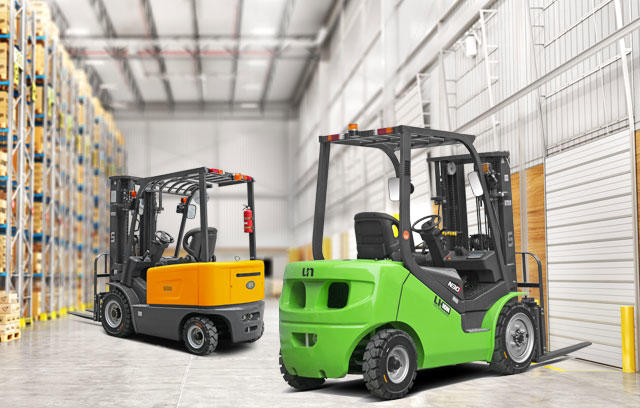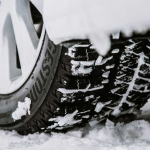When planning to buy a new forklift, it’s very important to ask the appropriate questions before purchasing. This isn’t just a small investment and, like all business decisions, should be approached with due diligence.
In this article, it will serve as your guide through some key considerations when you choose a new forklift. Provided you already have a forklift certification, you will know your options and how they could suit your needs.
Is the Forklift Electric or Gas-Powered?
Did you know there’s a big difference between an electric and a gas-powered forklift?
Electric forklifts are powered by large, heavy batteries that provide power to the motor. They’re usually quieter, emit no exhaust fumes, and require less maintenance than their gas counterparts.
However, they also require a longer period to recharge and may not be suitable for continuous heavy-duty use unless you have extra batteries on hand.
On the other hand, gas-powered forklifts run on either propane, diesel, or gasoline. These forklifts may operate continuously as long as fuel is available and can generally handle heavier loads than electric models.
Due to emission concerns, they are better suited for outdoor use or in well-ventilated areas. However, with this type comes more frequent maintenance checks like oil change intervals and spark plug replacements.
You should weigh your operational environment, load capacity requirements, and maintenance preferences will play key roles in determining if an electric or gas-powered model is right for you.
How Many Hours a Week can the Forklift be Used?
Understanding the weekly operational hours of the forklift is important, for it can impact its longevity, maintenance costs, and overall performance. Knowing how many hours a week the machine could be operated without compromising its functionality or safety is important.
The capabilities of different models will vary; some can withstand heavy use, while others may need more downtime for repair and maintenance. You have to be clear about your usage requirements before purchasing, for it will aid in choosing a model that will suit your needs best.
Ask the seller or manufacturer about the recommended operational hours for their specific models. For someone who already has a forklift certification, this should give you an idea of how long you can expect each forklift to perform optimally every week without causing undue stress to the machine.
What are the Maintenance Costs of the Forklift?
Keeping up with the maintenance costs of a forklift is as important as understanding its operational hours. When purchasing a new forklift, you must factor in the ongoing expenses for upkeep and repair.
An electric forklift may require less regular maintenance than an internal combustion engine but could cost more if major components like batteries or motors need replacing.
That said, requesting detailed information from the manufacturer or supplier about the usual maintenance and costs can help you plan your budget effectively.
Additionally, you should consider the availability of spare parts price for a certain model you plan to buy. Some brands may offer lower upfront costs but might have expensive components that are hard to source locally, leading to longer downtime during repairs.
Training or outsourcing costs should also be factored into your calculations if you don’t already have staff skilled in this area.
What is the Lifting Capacity?
It’s thrilling to imagine the sheer power of a chosen forklift that effortlessly lifts and moves heavy loads with ease. However, you must be well informed about its actual lifting capacity.
Forklift manufacturers specify this information in their product details, so you have to ensure you note it.
A lower-capacity model might suffice if you primarily move pallets of standard weights within a warehouse setting. But you’ll need a higher-capacity forklift if you’re in construction or dealing with unusually heavy materials like steel beams or large machinery parts.
Remember that pushing a forklift beyond its specified limits will not only compromise safety but also shorten its lifespan significantly due to strain on its components—thus leading to increased maintenance costs and downtime.
Therefore, always ensure that your chosen forklift matches your current and projected lifting needs before making a purchase decision.
What Additional Features Are Available?
Don’t forget to consider the extra bells and whistles your forklift can come with! Additional features will not just enhance functionality but may also improve safety and efficiency.
Some side shifters allow operators to move loads sideways without repositioning the entire forklift, thereby saving precious time on job sites.
Tilt control features also provide better load stability during lifting operations, and it could reduce the risk of accidents. Fork positioners help adjust the distance between forks quickly and accurately, handling loads of varying sizes.
Modern forklifts can also offer advanced tech features like onboard diagnostics that will monitor machine health in real-time or cameras providing a clearer view of blind spots or tricky areas.
Ergonomic enhancements such as adjustable seats or controls could improve operator comfort, potentially boosting productivity over long shifts.
Conclusion
Since you already have a forklift certification, perhaps you are ready to invest in a new forklift. You’ve pondered the important questions: power source, usage time, maintenance cost, lifting capacity, and additional features.
Considering these factors is important to ensure you make the right choice for your operations. Every business has unique needs, and understanding these details will help you select a machine that delivers optimal performance and value for money.














